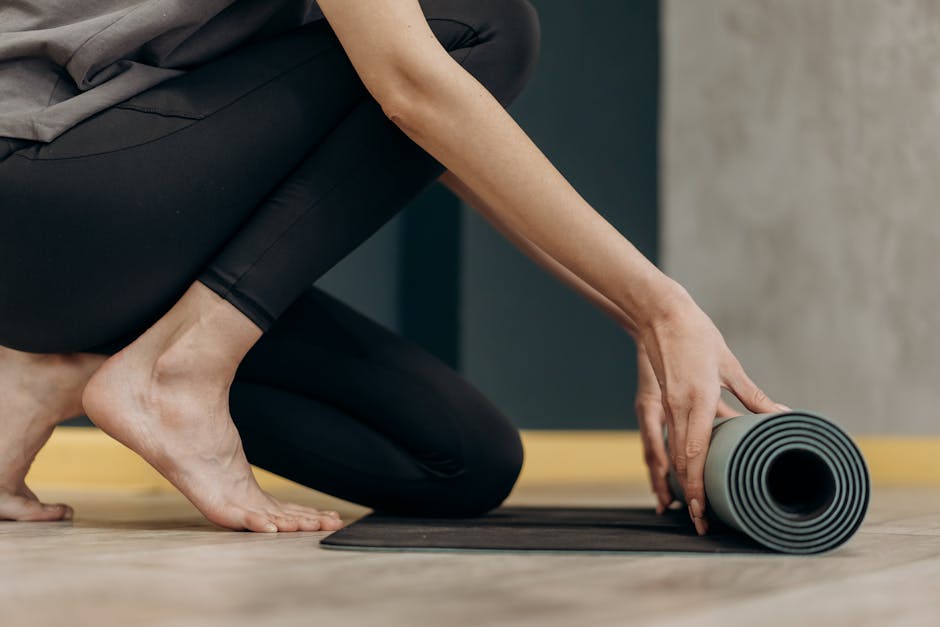Effective Exercises You Can Do at Home
When it comes to staying active, home-based workouts can be just as effective as hitting the gym. In fact, with a little creativity and consistency, you can achieve significant fitness goals without leaving your living room. The best part? You don’t need fancy equipment or a ton of space, just your body and a willingness to get moving.
Bodyweight Exercises: Your Foundation
Think of bodyweight exercises as the bread and butter of at-home fitness. They require no equipment, yet they target multiple muscle groups and improve strength, balance, and flexibility. Classic moves like push-ups, squats, and planks are incredibly versatile and can be modified for any fitness level.
Take push-ups, for example. If you're new to them, start by doing them on your knees or against a wall. As you build strength, progress to traditional push-ups or even more advanced variations like diamond push-ups or decline push-ups with your feet elevated on a sturdy surface. Squats work similarly: beginners can practice sitting back into a chair while advanced exercisers can try single-leg squats (also known as pistol squats) for an added challenge.
Planks deserve special mention because they engage your core while also working your shoulders and lower back. To spice things up, try plank variations like side planks or plank-to-push-up transitions. It’s like turning a basic peanut butter sandwich into a gourmet meal, small tweaks make a big difference.
Cardio Without the Treadmill
When people think of cardio, they often picture long runs or high-tech machines. But cardio can be simple, efficient, and done entirely at home. High-Intensity Interval Training (HIIT) is particularly effective and time-saving. A typical HIIT session might include 30 seconds of jumping jacks, followed by 15 seconds of rest, then 30 seconds of mountain climbers or burpees.
If jumping exercises aren’t your thing (or if noise is a concern) low-impact alternatives like step-ups on your stairs or brisk walking in place can get your heart rate up without upsetting your downstairs neighbors. For variety, consider shadowboxing. Picture yourself as an underdog in a sports movie while throwing punches in the air, it’s fun and burns calories faster than you’d think.
Household Items as Gym Equipment
You don’t need dumbbells or kettlebells when household items can serve the same purpose. A gallon of water weighs about 8 pounds, making it perfect for bicep curls or overhead presses. Similarly, a sturdy chair can double as a bench for tricep dips or Bulgarian split squats.

Laundry detergent bottles with handles work well for lateral raises or weighted lunges, while resistance bands (if you have them) are great for pulling exercises that strengthen back muscles, a common area of weakness for people who spend hours sitting at desks. Even something as simple as a backpack filled with books can act as an adjustable weight for squats or deadlifts.
Stretching and Mobility Work
No workout routine is complete without some attention to flexibility and mobility. Stretching helps prevent injury and improves overall movement quality, essential whether you're an athlete or just trying to lift groceries without pulling something.
Dynamic stretches like leg swings or arm circles are great warm-ups that prepare your body for exercise. Post-workout static stretches, such as holding a hamstring stretch for 20–30 seconds, help release tension in tight muscles. If you're someone who spends hours hunched over a laptop, add chest-opening stretches or cat-cow yoga flows to counteract poor posture.
A foam roller is another excellent tool if you have one lying around. It’s essentially a self-massage device that targets sore spots and improves circulation. No foam roller? No problem, a tennis ball works wonders for releasing tight spots in smaller areas like your calves or upper back.
Building Consistency at Home
The biggest hurdle in sticking to any fitness plan isn’t lack of equipment; it’s often finding the motivation to stay consistent. One way to tackle this is by setting small, achievable goals, such as committing to three 20-minute sessions per week instead of aiming for hour-long workouts every day.
If motivation dips, consider joining online workout challenges or streaming free exercise classes from platforms like YouTube. Many trainers post full-length routines designed specifically for home settings, catering to all levels from beginner to advanced.
Another trick is incorporating fitness into daily habits rather than seeing it as separate from everything else. For instance, do calf raises while brushing your teeth or hold a wall sit during commercial breaks when watching TV. These little additions add up over time without feeling overwhelming.
Lastly, don’t underestimate the power of music or podcasts during workouts. A playlist that pumps you up (or an engaging podcast episode) can make even burpees seem less daunting.
Don't overcomplicate it!
Staying fit at home doesn’t have to be complicated, or boring. Whether you're crafting creative weight alternatives from household items or doing classic exercises with a twist, there’s no shortage of ways to keep things fresh and effective. Remember: it’s not about having the perfect setup; it’s about showing up consistently and challenging yourself within your current limits.
For additional tips on crafting personalized workout plans or exploring new exercise ideas, check out resources like Healthline or SELF Magazine. There’s always room to learn more about how movement can benefit both body and mind, right from the comfort of home.